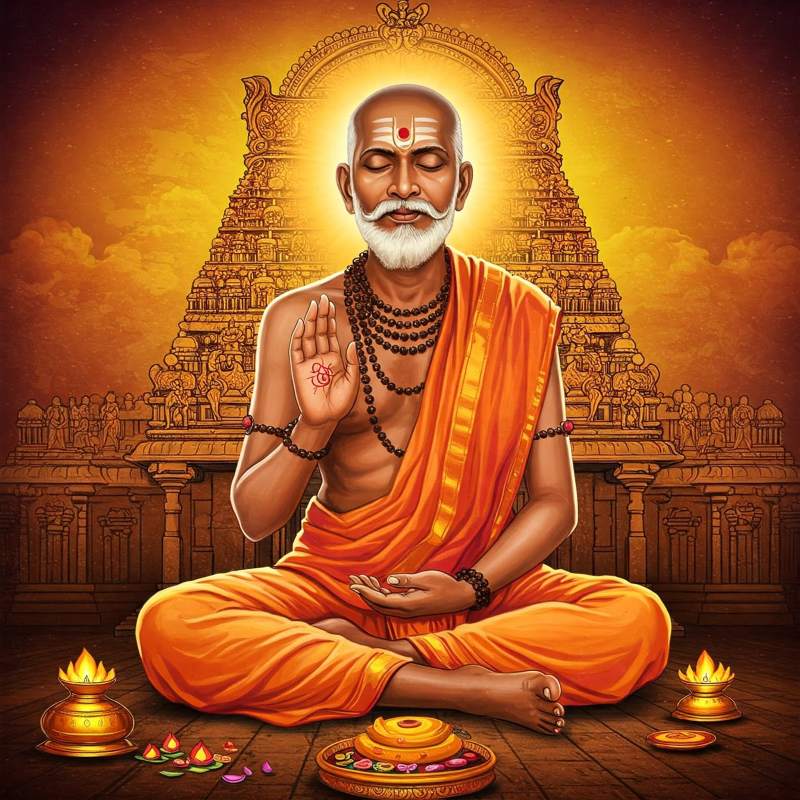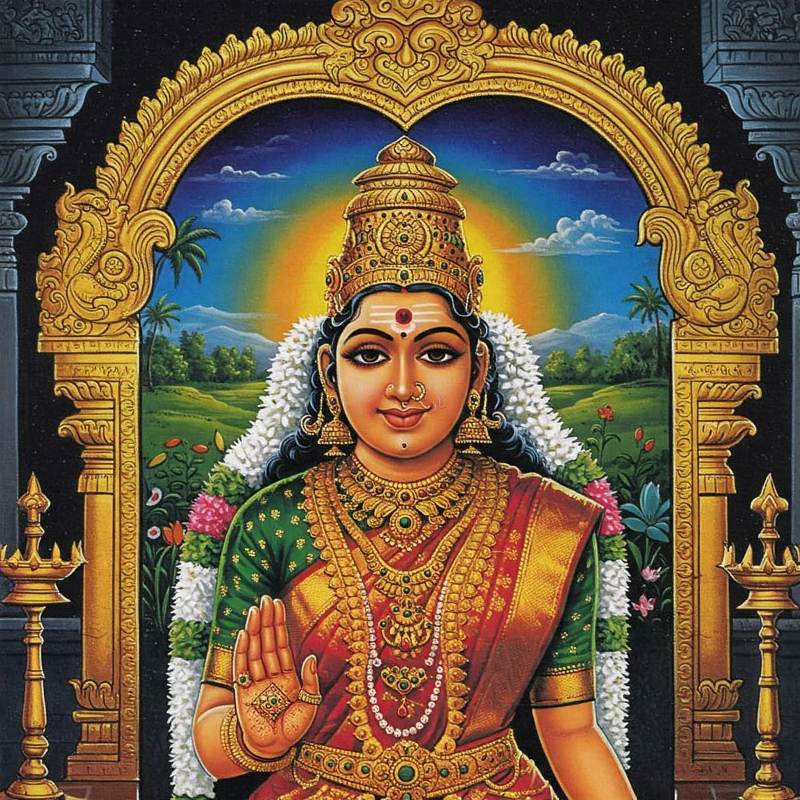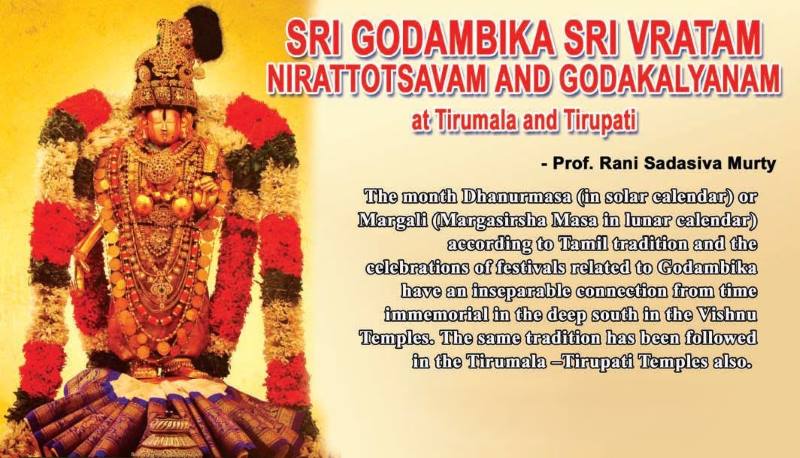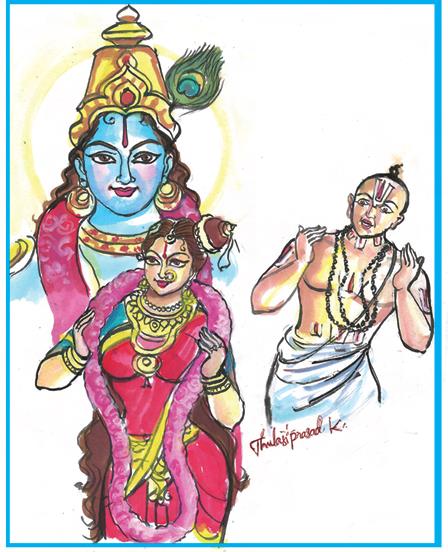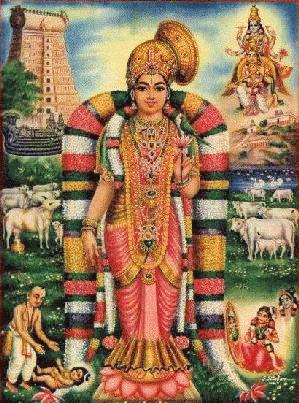Periya Alwar In all, we have 12 Alwars. Of them, two hail from Sri Villi Puttur. They are Vishnu Chitta and Andal, father and daughter. Vishnu Chitta is also called Periya Alwar. Among the Alwars, Vishnu Chitta has received high reverence. That is why he is also called as Periya Alwar. In Tamil, Periya means Read More
Tag: Andal
On Samadhi day of Ananthalvar, which also happens to be the birthday of Goda Devi (who is popularly known as Andalu) too
Goda Devi’s Nachiyar Tirumoli
Goda Devi’s Nachiyar Tirumoli – Its Beauty and Significance Sri Goda Devi or Sri Andal is the incarnation of Mother Earth. She was found near the Tulasi plant at Srivilliputtur by Sri Vishnuchittar (Periyalvar). As described by Swamy Vedanta Desika in Goda Stuti, she is ‘Sri Vishnu Chitta Kula Nandana Kalpavalleem. She grew up hearing the ‘leelas’ Read More
Goda Devi’s Naachiyaar Thirumozhi
Goda Devi’s Naachiyaar Thirumozhi – It’s beauty and Significance Sri Goda Devi or Sri Andal is the incarnation of Mother Earth. She was found near the Tulasi plant at Srivilliputtur by Sri Vishnuchittar (Periyalvar). As described by Swamy Vedanta Desika in Goda Stuti, she is ‘Sri Vishnu Chitta Kula Nandana Kalpavalleem. She grew up hearing Read More
The Privilege of Kulasekhara Alwar
Kulasekhara Alwar Kulasekhara Alwar wrote in Sanskrit called ‘Mukundamala’, a garland of poems in praise of Lord Krishna. He was also a staunch devotee of Lord Rama and his eleven Pasurams on the Lord of Seven Hills reflect his ‘Saranagati’ to Lord Venkateswara. His pasurams dedicated to Lord Venkateswara of Tirumala Hills are to be Read More
Sri Godambika Sri Vratam Nirattotsavam
Sri Godambika Godambika or Goda Devi or Andal as popular in Tamil Vaishnava Tradition are the names of the same great person. Godambika was the only female of Vaishnava Dharma among the 12 alwars or azhwars. She was praised as the human incarnation of Goddess Bhudevi as a baby found in the Tulasi Garden at Read More
Andal Thiruvaadipooram
Andal Thiruvaadipooram (Birthday of Andal or GodaDevi) Goda Devi – Incarnation of Bhumi Devi Goda Devi, hailed as Sri Andal is an incarnation of Bhumi Devi. She was bought up by Perialwar named Vishnuchittar in the temple town of Sri Villiputtur, Tamil Nadu. She is considered one of the 12 Vaishnava Saints known as Alwars Read More
Thiruvaadipooram of Sri GodaDevi
Thiruvaadipooram (Birthday of GodaDevi) Goda Devi – Incarnation of Bhumi Devi Goda Devi, hailed as Sri Andal is an incarnation of Bhumi Devi. She was bought up by Perialwar named Vishnuchittar in the temple town of Sri Villiputtur, Tamil Nadu. She is considered one of the 12 Vaishnava Saints known as Alwars who are devoted Read More
Tiruppavai
What is Tiruppavai Tiruppavai is writing describing the religious ritual (Vratam) undertaken by the spinsters (milkmaids) to get a good husband. This was rendered in 30 stanzas. What is Pasura(Stanza) In Tamil, a poem that is written in a classical style and lyrical tradition with utmost devotion is called a ‘Pasura’ (Pausra = Stanza). In Read More
Story of Goda Devi (Andal)
Goda Devi – The Embodiment of Devotion Goda Devi (Andal), the Embodiment of love and devotion, prays to Lord Krishna: ‘O! Sri Krishna! You are my mother, father, friend, and relative. You are everything to me. All my bonds are only with you. Not just in this life, but in all lives, I wish to Read More
